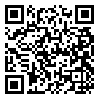BibTeX | RIS | EndNote | Medlars | ProCite | Reference Manager | RefWorks
Send citation to:
URL: http://erfaniyat.iauh.ac.ir/article-1-149-en.html
In this article I have compared The Little Prince written by Saint Exupery with Islamic mysticism. At first glance it may be seemed that they are not compatible, but after a deep reflection about both of them and a comparison between their details, the results are wonderful. In the writer's opinion the similarities between the two subjects of discussion are rooted in coincidence of ideas and in Exupery's truth-seeking nature and not necessarily in his acquaintance with the Islamic mysticism. A lot of instances of these mystical concepts such as divinely inspired knowledge, submission to divinely will, satisfaction, contentment, insight, asceticism, spiritual guide, bewilderment etc. can be discerned in an aparently childlike story.
That the storyteller chooses children's language is due to their heart purity or the meeting of the pilot with the prince is a reminder of the sufi's unexpected meetings. The pilot's presence in a desert is a symbol of bewilderment and the prince's help to the pilot is like the rescue coming from the spiritual guide (pirs or Khizr). The prince's vague and allegorical speech is like the pirs' ambiguous speeches and their secret keeping. Those who have limited themselves in their little stars are symbols of the worldly-minded people.The little prince's asking snake to sting him is a reminder of volutary death and his return to the star from which he has come is a symbol of man's final return to his origin.
Received: 2016/07/1 | Accepted: 2016/07/1 | Published: 2016/07/1
| Rights and permissions | |
 |
This work is licensed under a Creative Commons Attribution-NonCommercial 4.0 International License. |





